#berbers
Text
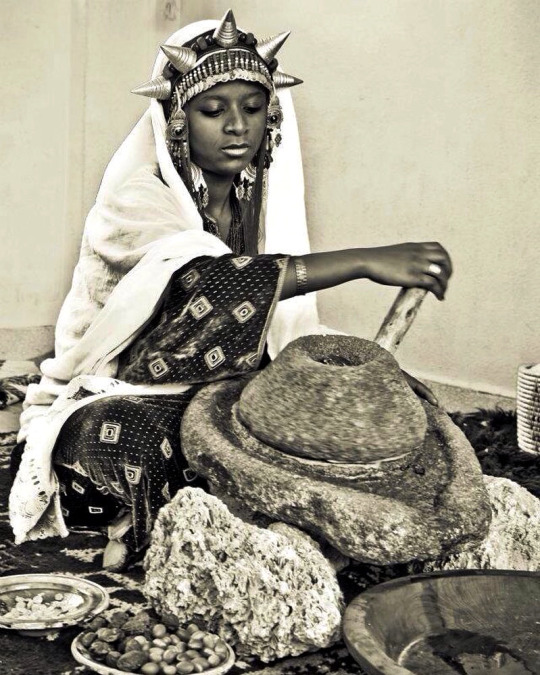
A Berber woman making Argan Oil
143 notes
·
View notes
Photo

Quote from 1867 by founding Egyptologist Champollion Figeac –
“The first tribes that inhabited Egypt that is, the Nile Valley between the Syene cataracts and the sea, came from Abyssinia to Sennar. The ancient Egyptians belonged to a race quite similar to the Kennous or Barabras, present inhabitants of Nubia
In the Copts of Egypt we do not find any of the characteristic features of the ancient Egyptian population. The Copts are the result of crossbreeding with all the nations that have successively dominated Egypt . It is wrong to seek in them the principal features of the old race.”

From Letters published by Champollion-Figeac (Founding Egyptologist)
Also written by Jean Francois Champollion
“Dr. Larrey investigated this problem in Egypt; he examined a large number of mummies, studied their skulls, recognized the principle characteristics, tried to identify them in the various races living in Egypt, and succeeded in doing so. The Abyssinian seemed to him to combine them all, except for the black race. The Abyssinian has large eyes, an agreeable glance, prominent cheekbones; the cheeks form a regular triangle with prominent angles of the jawbone and mouth; the lips are thick without being everted as in Blacks; the teeth are fine, just slightly protruding ; finally, the complexion is merely copper-colored: such are the Abyssinians observed by Dr. Larrey generally known as Berbers or Barabras, present-day inhabitants of Nubia.”

#africans#nubia#ta seti#ta netjer#berbers#barabras#dr larrey#abysssinian#egypt#jean francois champollion#egyptology#kemetic dreams#north african#north africa#light skin#dark skin#east africa#teeth#white tunics
308 notes
·
View notes
Text
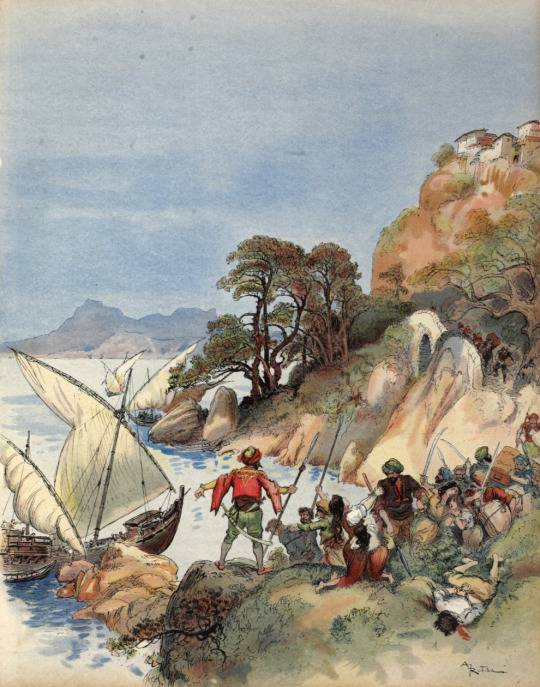
Barbary pirates terrorising the coast of the Mediterranean, kidnapping the inhabitants to sell as slaves
by Albert Robida
#barbary pirates#mediterranean#art#albert robida#pirates#pirate#europe#southern europe#barbary coast#north africa#history#european#north african#berber#berbers#muslim#muslims#islam#islamic#corsair#corsairs#ottoman#ottomans#ottoman empire#illustration#georges g toudouze#georges gustave toudouze#christians#christian
34 notes
·
View notes
Text
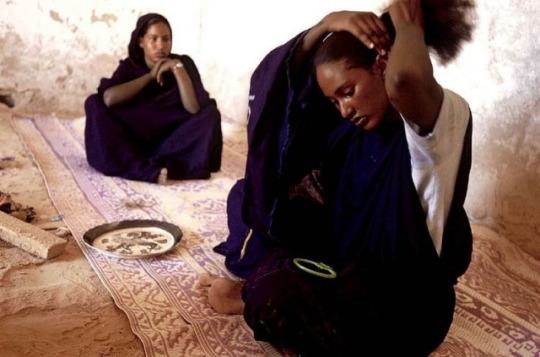
Imraguens women fixing their hair, 2002
448 notes
·
View notes
Photo

Second Punic War
The Second Punic War (The Hannibalic War) was fought between Carthage and Rome between 218 and 201 BCE. The war involved confrontations in Spain, Italy, Sicily, Sardinia, and North Africa. Hannibal led the Carthaginians, one of the most gifted commanders in history, but the Romans had their own great general Scipio Africanus, and he successfully attacked Carthage on home soil.
Learn more about Second Punic War
57 notes
·
View notes
Photo





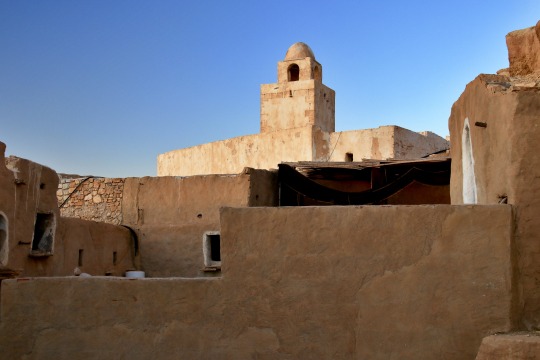




hotel in ruined troglodyte village of Berber ( Douiret / Tunisia )
#cavehotel#douiret#berbervillage#berbers#berber#hotel#pointofview#ancienne#villagehotel#troglodyte village#troglodyte#whitemosque#trip#saharatrekking#saharavillage#saharadesert#sahara#travelphotography#travel#adventure#exploretunisia#explore#discovertunisia#tunisiatravel#visittunisia#tunisia#photooftheday#nature#landscape#hotelroom
95 notes
·
View notes
Text

José Tapiro y Baro [a.k.a. Josep Tapiró i Baró] (Catalon Spanish, 1836-1913), The Berber Bride, 1883.
210 notes
·
View notes
Text

Iznassen Berbers on the market of Ain Sfa, Morocco
French vintage postcard
#sfa#tarjeta#postkaart#sepia#iznassen#ain sfa#historic#berbers#photo#morocco#postal#briefkaart#photography#vintage#ephemera#ansichtskarte#old#postcard#french#market#postkarte#carte postale#ain
9 notes
·
View notes
Note
Those woke westerners are the same people who lie about how “North Africa was black until the Greeks and Arabs came in and mixed in with or replaced the native population” even though it’s so easy to disprove like there are literally Wikipedia articles on North African genetics citing gene studies that find that the modern population of North Africa is descendant from people who have been there for 16,000 years with very little mixing especially as far west as Morocco.
Then everyone’s like “then why are some North Africans lighter” (or
more likely just “why are North Africans lighter” because they tend to ignore and erase those North Africans who are dark-skinned like… maybe because North Africa is… farther North. My friends. My comrades. It’s literally just farther from the equator. Of course you’re gonna get blond people in Kabylia.
Anyways my point is that when Americans claim the North African population was replaced or displaced by Arabs not only are they embarrassing themselves by spreading easily disproved misinformation but they’re actively contributing to the erasure of Amazighs, modern indigenous North African peoples / populations, who are heavily oppressed by their governments.
.
#not adding anything to this as i am less knowledgeable#not greece related#cleopatra discourse#anti-netflix#berbers#anon#mail
40 notes
·
View notes
Text

does anybody here have this book and wants to share the file with me? it was removed from zlibrary due to copyright violations...
Ethnoarchaeology of the Kel Tadrart Tuareg. Pastoralism and resilience in Central Sahara by Stefano Biagetti
#piracy#ethnoarchaeology#book request#ethnography#anthropology#tuareg#imazighen#amazigh#touareg#nomads#pastoralism#nomadic pastoralism#kel tadrart#archaeology#archeology#stefano biagetti#looking for books#berbers#north africa#sahara#central sahara#plaese????#moje#i guess#fuck copyright
12 notes
·
View notes
Text
Preparing for the High Holy Days in Algiers
As the first fruits of they year appeared in the street markets, Jewish housewives busied themselves preparing festive dishes, jams and jelly for the High Holy Days. The chidren enjoyed waffles, biscuits and ice cream. Caroline Elisheva Rebouh shares her memories of childhood in Algiers in the Morial newsletter (With thanks: Leon):
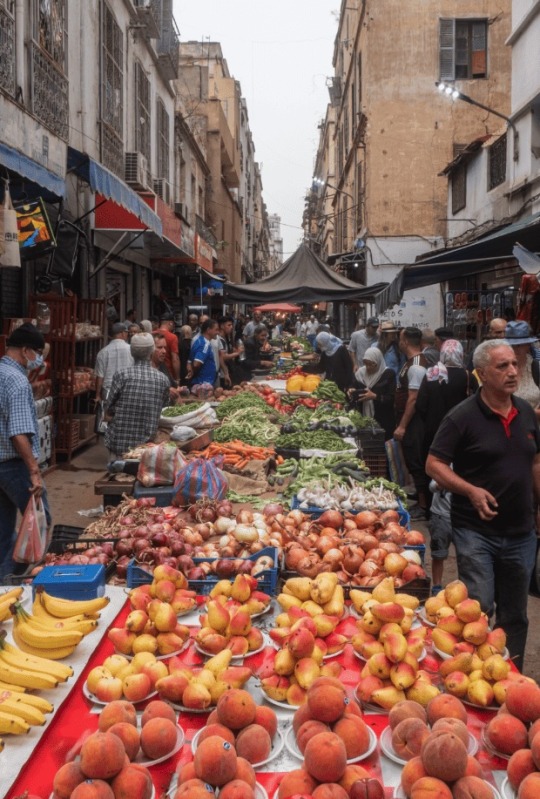
Algerian street market
In the last days of the summer holidays, mothers were busying themselves with the household chores in readiness for the Jewish High Holy Days of Rosh Hashana, Yom Kippur and Succot.
The families gathered around festive meals. They needed to prepare traditional dishes in advance for guests to sample, and especially pre-prepared confectionery and pastries. At the time, few of us had a refrigerator.
The markets overflowed with fruit of all kinds: housewives selected quinces, white-flesh sweet potatoes, figs, and pinkish grapes.
The quinces were chosen carefully to be almost sure that they were not “visited” by unwanted worms. They were rinsed, peeled and cut into quarters – hard to do as the fruit was hard. The seeds were removed and reserved separately for jam and quince jelly. People loved it at the end of the Yom Kippur fast!
The fruits were boiled to soften the flesh so that the sugar syrup seeped into the flesh of the fruit and the sugar remained clear. It was during this operation that the seeds (quince cores) were added so that the pectin let the syrup gel. Some of the boiled quinces were cooked over low heat. During the prolonged simmering, sugar was added in small quantities, while the mix was stirred to make a fruit paste.
The figs were also quickly turned into a light-coloured and appetizing jam.
The grapes: we chose a variety called “bou amar” : the grapes were round, relatively large and pink. Mothers armed their children with fresh feathers to deseed the grapes. The jam was also pinkish and pleasant, and some mothers would wrap the seeds of the grapes in fresh compresses to make jelly.
A little later there would appear small apples of a very pale green and with light pink spots on the side which were used for the Rosh Hashanah seder and which were called Kabyle apples. Small white and pink peaches with firm, tender and fragrant flesh were also called Kabyle (Berber) – no doubt coming from Kabylia.
In Algiers, we children ignored the entire selihoth period. We only experienced the season through the pleasure of tasting small amounts of candy floss, fine biscuits and other delights.
During and at the end of summer, small stalls “flowered” on street corners: the yaouled (children or young teenagers) offered us freshly-picked prickly pears which they peeled with dexterity and presented them on fig tree leaves so that our little fingers did not touch the thorns. Other yaouled offered grilled corn on the cob: we savoured them on the benches in the public gardens where we played with our cousins, neighbors and classmates.
From time to time, we gathered around small confectioners who tempted us with sugar of different colours which they sold in small quantities. We sucked them by holding them between our fingers and then crunched our teeth on them.
The waffle merchants announced their passage by waving wooden boards with handles on both sides. festooned with mini-shutters which tinkled with a dry and dull sound.
At that time we liked our waffles a little thicker than ice cream cones. They were rolled up in cones and stacked in a sort of cylinder about one meter high. The merchant placed it at ground level to serve his young customers.
But fine biscuits weren’t the only popular waffles: at Grosoli, a popular ice cream parlor in Algiers, the ice cream cups were decorated with a fan or a fine rolled biscuit.The Bitone company also marketed what were called “funny wafers” : they carried short slogans like “You won” or “I love you”.
When many years later we found ourselves in Marseille, we could no longer find ice creams like those of Algiers.
Read article in full
14 notes
·
View notes
Text

‘Femme du Makhzen, Meknes (1934)’ — Jean Besancenot (French, 1902-1992)
#jean besancenot#photography#french#meknes#maroc#morocco#moroccan#makhzen#maghreb#berbers#amazigh#moors#moorish#mauresque#french colonialism#🇲🇦
38 notes
·
View notes
Photo

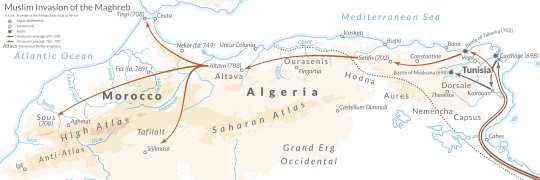


The history of the Berber peoples.
by @Schwarzbauer2
113 notes
·
View notes
Text
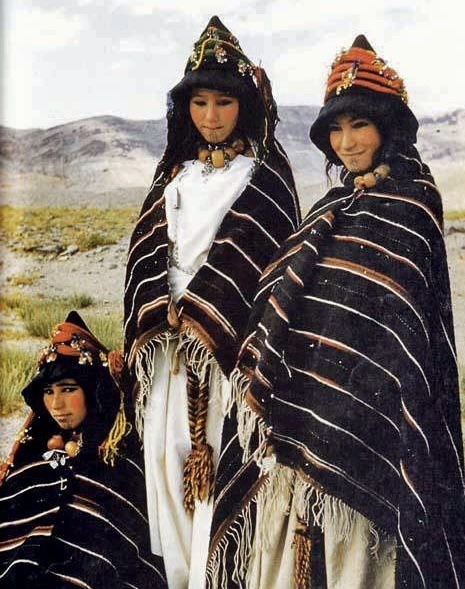
Women in High Atlas, Morocco.
74 notes
·
View notes
Text
Experiencing Morocco During Ramadan: A Journey of Culture and Reflection
Experience Morocco during Ramadan! Immerse in vibrant traditions, savor mouthwatering cuisine, and embrace the spirit of this holy month. Discover more in our latest travel blog! 🕌✨ #RamadanInMorocco #TravelExperience
Morocco, a land of vibrant colors, rich history, and enchanting landscapes, offers travelers a unique opportunity to immerse themselves in the spirit of Ramadan. As the ninth month of the Islamic lunar calendar, Ramadan holds significant cultural and religious importance for Muslims worldwide. For travelers, visiting Morocco during Ramadan unveils a tapestry of traditions, rituals, and culinary…

View On WordPress
#Agafay#Agafay Desert#Amazigh#Andalusian#Assilah#Berbers#Culinary Arts#culture#Drinks#Essaouira#Fes#Fez#Hoceima#marrakech#Medinas#Meknes#Mocaics#Moorish#Morcoco#Morocco#Rabat#Riad#Riads#day trips#ramadan#road trips#sustainability#tourism#tours#culturaltours
2 notes
·
View notes
Photo

Cyrene
Cyrene (modern-day Shahhat, Libya) was a vital cultural center and port of trade in North Africa founded in 631 BCE by Greek colonists from the island of Thera. The city is best known as the birthplace of the philosopher Aristippus of Cyrene, the poet/scholar Callimachus, and the polymath Eratosthenes, as well as from references in the Bible.
Continue reading...
55 notes
·
View notes